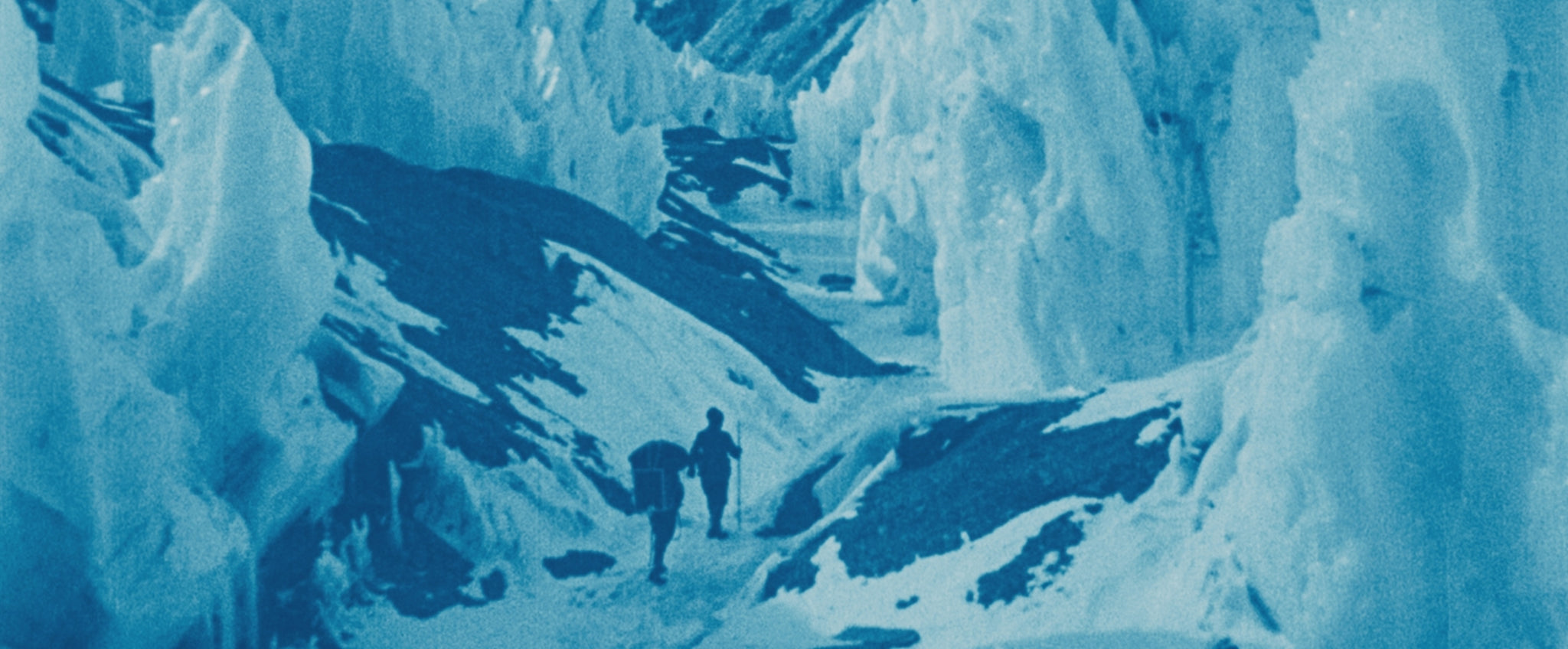“Post Phase: The Summit is Blue” may not have the epic quality of Everest, nor the presence of yaks,* but it does yield a suitable chill in proportion to its means and positioning. By comparison to Everest, a small mound of ice at the back of the upstairs studio space provides the required brrrr to make the teeth chatter. The tone is set, and time marked by the process of watching ice melt.
And so begins our expedition, presented in two volumes, with a solo choreographed and performed by Chignell. With the audience seated along three sides of the studio space, things move initially at a glacial speed. Slowly, tentatively, a body unfurls. And it does so quietly, positions held frozen for the longest of moments, as befits an exploration of gravity. “Volume One: The sublime attends to gravity” is initially a contemplative experience that seeks to decant its choreographed meaning at a measured pace and through a repetition of movement. Or is that an echo? As things speed up, both body and accompanying sound, the work shifts into new territory that rewards my initial patience. It throws into sharp relief the tranquility of earlier movements kept minimal, as Chignell’s hand reaches upward, making a fist on its descent as it is tucked back alongside the body, over and over again. Sometimes the left hand, sometimes the right, sometimes viewed from behind, sometimes from the side, and a hypnotic state is hinted at as movements look to drive the performer and not the other way around. A changing state: ice melts, and the exertion of movement is communicated to the audience by Chignell’s shortness of breath and footfall now less measured. Yes, this is, I imagine, not unlike ascending Everest.
The body pushed to its very limits leads us seamlessly to Walsh’s “Volume Two: The endless motion of the motionless man,” in which both dancers hug to their near-bare bodies a bag of ice. Seated with their feet in the aforementioned mini-Everest tribute, they shiver involuntarily. It is at first humorous to see such a sight as one imagines the hot prickle of cold ice upon warm skin, but it soon turns to one of discomfort as the pain can be seen. The dancers’ stamina is being tested before our very eyes, and the weakness and shortcomings of the human body are laid bare. We humans are for all our endeavors and heroic acts horribly fallible. Teeth will chatter no matter how strong and disciplined you are.
Casting aside their bags of ice, Chignell and Walsh dress in their nearby neatly folded costumes with the quick and familiar movements of someone trying desperately to get warm whilst lamenting/cursing their numb fingers. Numbness making the simple near impossible, perhaps the cruelest trick of all: each attempting to fasten the button at the back of their matching outfits. Or perhaps it was the struggle with the shoelaces.
It is in this second volume, this duet that begins in ice emersion, that all becomes clear. A mountain scaled is because one can. A series of jetés over wooden planks symmetrically placed enables us to watch the dancers keep in step and sometimes falter as repetition takes its toll. In this pattern, a trance-like state of exertion is evident as the dancers push themselves to continue their sequence.
As Chignell and Walsh comment, “we want the audience to feel the sensation of the movement and the sound happening right there, with them.”[note]Rain Francis, “Dance at Melbourne Fringe Festival,” Dance Informa September 2, 2014[/note] And for me, for roughly one hour on a Saturday evening, these two explorers did just that. From base camp to mountain peak, the view from the summit not only blue but altered.
* “The negatives were sent down the mountain and across the Tibetan plains by yak to Darjeeling where Noel had set up a special laboratory to process the films.” Bryony Dixon, “Restoring The Epic of Everest,” BFI online, April 17, 2014









comments